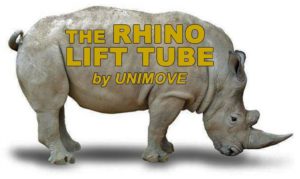 Vacuum lifting has been an ergonomic solution for years, as it reduces lifting-related back injuries and minimizes operator fatigue. The physical benefits for employees, along with the long-term time savings and cost savings, make vacuum lifting an important part of factories world-wide. However, not many people understand how vacuum lifting really works. How can a small vacuum tube lift such heavy objects? To answer this, it is important to understand not only the basics of what a vacuum is, but how vacuum power works.
Vacuum lifting has been an ergonomic solution for years, as it reduces lifting-related back injuries and minimizes operator fatigue. The physical benefits for employees, along with the long-term time savings and cost savings, make vacuum lifting an important part of factories world-wide. However, not many people understand how vacuum lifting really works. How can a small vacuum tube lift such heavy objects? To answer this, it is important to understand not only the basics of what a vacuum is, but how vacuum power works.
What is a Vacuum?
A vacuum is space in which there is no matter or in which the pressure is so low that any particles in the space do not affect any processes being carried on in the space (Britannica). The creation of a true vacuum would require the ability to remove all air molecules from a container, which mean it’s very difficult to create a perfect vacuum. Because of this, many people equate vacuum force to be the same as a vacuum.
To create vacuum force, a vacuum system would need to remove air from a space. In an industrial vacuum system, a pump or generator removes air from a space to create pressure differential. As more air is removed, the pressure differential increases and therefore the vacuum force become greater.
How an Industrial Vacuum Lifting System Works
A typical industrial vacuum system has a variety of parts that work in unison to create force. Normally, they include fittings, controls valves, switches, filters, and cups that work together to eliminate leaks and limit the volume of air within a space. Most vacuum systems include vacuum lines that are narrow in order to reduce the amount of air that has to be evacuated. That way, less power is needed to reduce or suck the air out of the area to create vacuum force for non-porous loads.
Fittings ensure that the space is fixed and there are no leaks, while control valves control the vacuum force in the lifting system. Though it doesn’t seem like filters would be necessary, vacuum filters are used to protect the lifting system from dust contamination. Dust can affect a variety of functions throughout the system, but it can specifically disturb the cup and create a surface that isn’t ideal for gripping the object being lifted. Suctions cups must feature a flat, non-porous surface and be made of air-tight material in order to function properly.
Rhino Tube for Vacuum Systems
UNIMOVE, LLC. has designed the Rhino Tube that revolutionizes lifting scenarios. This copolymer resin tube produces significant improvement in the overall quality and reliability of any vacuum lift system because it is inert to chemical exposure and reduces air leaks. As previously mentioned, air leaks are extremely detrimental to vacuum force and can reduce the efficiency of vacuum lift systems. Because of its high air flow and 2” hoses, the Rhino tube is superior to many vacuum lines because it is suitable for either non-porous or highly porous loads.
UNIMOVE, LLC. designs products that utilize vacuum force efficiently to automate a wide variety of material handling applications. These systems are superior in quality, durability, and reliability to any other lifter on the market, with the highest lifting capacities in the industry for both porous and nonporous loads. If you are interested in learning more about vacuum force or vacuum lifting systems, contact the experts at UNIMOVE, LLC. today!
